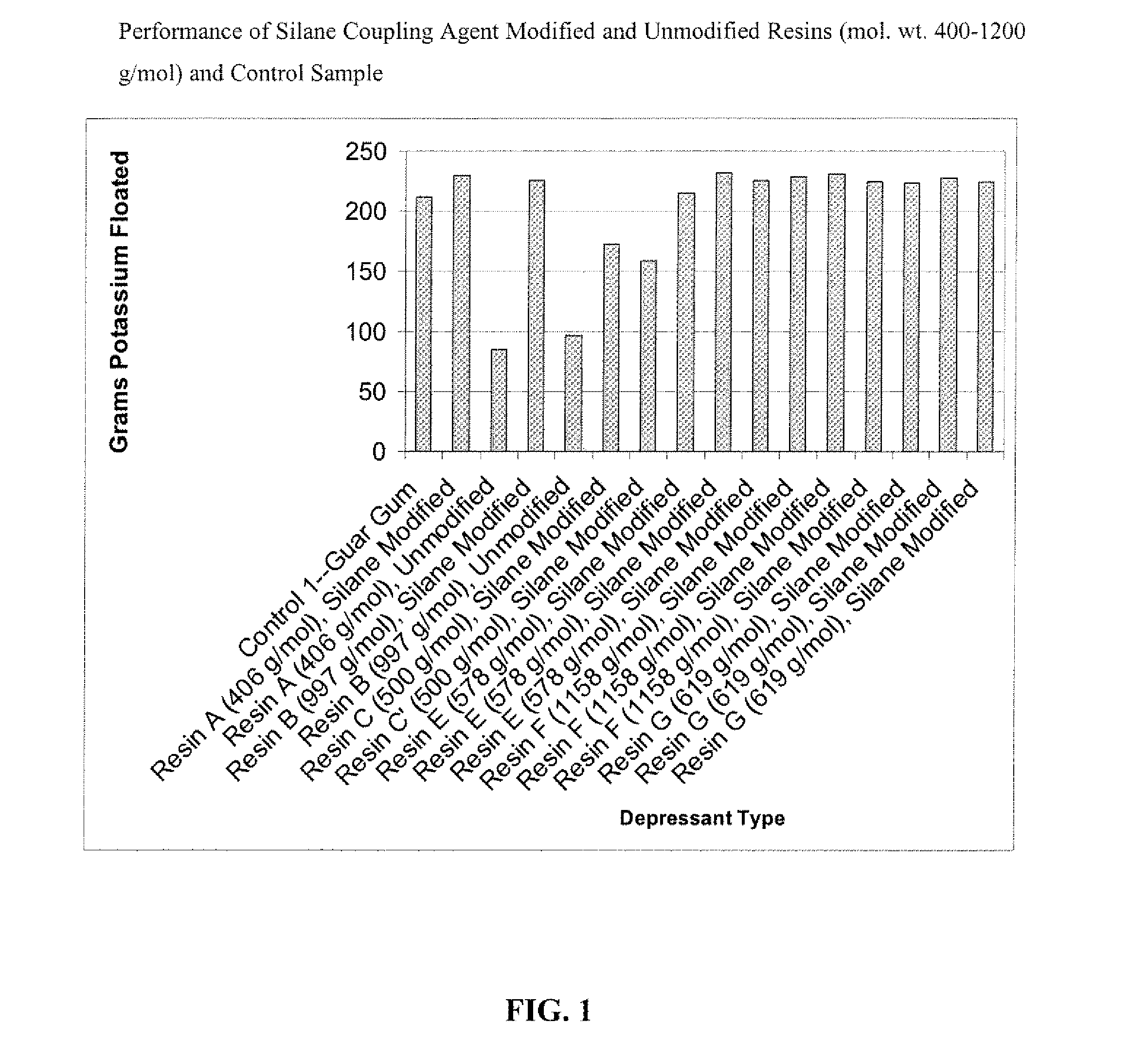Modified amine-aldehyde resins and uses thereof in separation processes
a technology of aminealdehyde and resins, which is applied in the field of modified resins, can solve the problems of insufficient refinement in many cases, no agent is currently used to improve solid/liquid separation, and inability to predict utility, etc., and achieves the effect of reducing the amount of moisture, facilitating the removal of solid particulates, and highly selective for binding
- Summary
- Abstract
- Description
- Claims
- Application Information
AI Technical Summary
Benefits of technology
Problems solved by technology
Method used
Image
Examples
example 1
[0179] Various urea-formaldehyde resins were prepared as low molecular weight condensate resins, initially under alkaline conditions to form methylolated urea adducts, and then under acidic conditions to form the condensate. The condensation reaction was stopped by raising the pH of the condensation reaction mixture. Other preparation conditions were as described above. These base resins are identified in Table 1 below with respect to their molecular weight (Mol. Wt.) in grams / mole and their approximate normalized weight percentages of free urea, cyclic urea species (cyclic urea), mono-methylolated urea (Mono), and combined di- / tri-methylolated urea (Di / Tri). In each case, the base resins were in a solution having a resin solids content of 45-70%, a viscosity of 500 cps or less, and a free formaldehyde content of less than 5% by weight.
TABLE 1Urea-Formaldehyde ResinsFreeCyclicIDMol. Wt.aUreaUreaMonoDi / TriResin A4068393023Resin B*9975502223Resin C and C′**5006462523Resin D and D′**...
example 2
[0181] The above urea-formaldehyde base resins described in Table 1 were modified by the silane coupling agents #1, #2, and #3, as described in Table 2, according to procedures described previously. Namely, the silane coupling agent was added to the base resin solution in an amount of about 0.1-2.5% based on the weight of the resin solution, after formation of a low molecular weight condensate and the subsequent addition of a base to increase the solution pH and halt the condensation reactions, as described above. The alkaline mixture of the base resin and silane coupling agent was then heated to a temperature of about 35-45° C. for about 0.5-4 hours, until a viscosity of about 350-450 cps was achieved.
example 3
[0182] Various urea-formaldehyde resin samples, representing both unmodified resins or resins modified with silane coupling agents as noted above, along with a control depressant, were tested for their selectivity in removing siliceous sand and clay impurities from potash ore by froth flotation, in a laboratory-scale beneficiation study. In each test, the amount of depressant employed per unit weight of ore to be beneficiated, the solids content of the ore slurry, the pH of the slurry, the volumetric air flow rate per unit volume of the slurry, the phosphate purity of the ore prior to beneficiation, and other conditions were representative of a commercial operation. In each test, the ore recovered by flotation was at least 90% by weight pure phosphate material. A commercially available guar gum was used as a depressant control sample.
[0183] In these experiments, the performance of each depressant was measured based on the quantity of potash that could be recovered (i.e., floated) a...
PUM
| Property | Measurement | Unit |
|---|---|---|
| Temperature | aaaaa | aaaaa |
| Fraction | aaaaa | aaaaa |
| Substance count | aaaaa | aaaaa |
Abstract
Description
Claims
Application Information
 Login to View More
Login to View More - R&D
- Intellectual Property
- Life Sciences
- Materials
- Tech Scout
- Unparalleled Data Quality
- Higher Quality Content
- 60% Fewer Hallucinations
Browse by: Latest US Patents, China's latest patents, Technical Efficacy Thesaurus, Application Domain, Technology Topic, Popular Technical Reports.
© 2025 PatSnap. All rights reserved.Legal|Privacy policy|Modern Slavery Act Transparency Statement|Sitemap|About US| Contact US: help@patsnap.com


